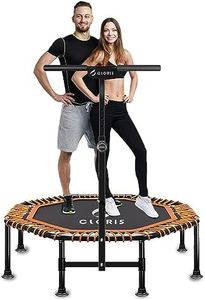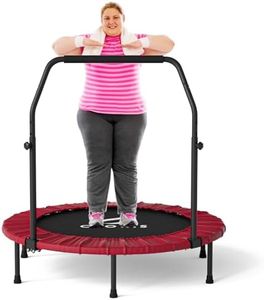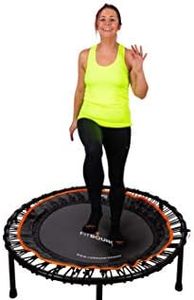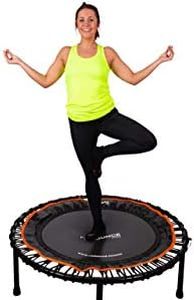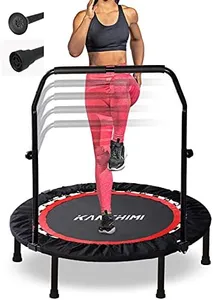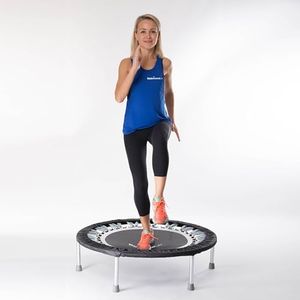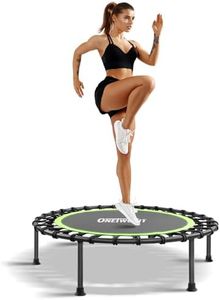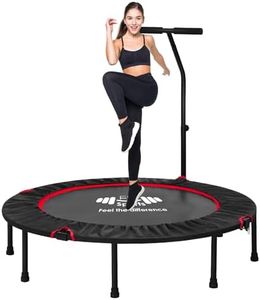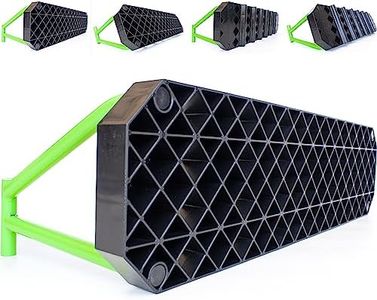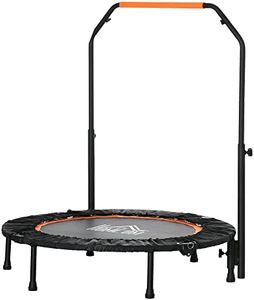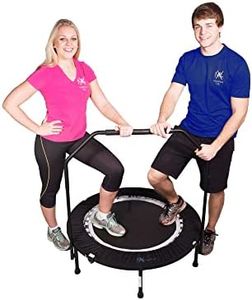We Use CookiesWe use cookies to enhance the security, performance,
functionality and for analytical and promotional activities. By continuing to browse this site you
are agreeing to our privacy policy
10 Best Rebounders
From leading brands and best sellers available on the web.Recommended lists
Buying Guide for the Best Rebounders
Rebounders, also known as mini trampolines, are a fantastic way to get a low-impact workout that can improve cardiovascular health, balance, and coordination. When choosing a rebounder, it's important to consider several key specifications to ensure you get the best fit for your needs. Here are the main factors to consider and how to navigate them.SizeThe size of the rebounder is important because it affects the space you need to use and store it, as well as the surface area available for exercise. Rebounders typically range from 36 to 50 inches in diameter. Smaller sizes are more portable and easier to store, making them ideal for small spaces or for those who plan to travel with their rebounder. Larger sizes provide more jumping space and stability, which can be beneficial for more intense workouts or for users who need extra room to feel secure.
Weight CapacityWeight capacity refers to the maximum weight the rebounder can safely support. This is crucial for ensuring safety and durability. Rebounders usually have weight capacities ranging from 200 to 400 pounds. If you are on the heavier side or plan to use the rebounder for vigorous workouts, opt for a higher weight capacity to ensure it can handle the stress without compromising safety.
Spring vs. BungeeRebounders use either springs or bungee cords to provide the bounce. Spring-based rebounders tend to be firmer and provide a more vigorous workout, but they can be noisier and may wear out faster. Bungee-based rebounders offer a softer, quieter bounce and are generally more durable, making them better for joint health and quieter environments. Choose springs if you prefer a more intense workout and bungees if you want a gentler, quieter experience.
Mat QualityThe quality of the mat affects the comfort and durability of the rebounder. Look for mats made from high-quality, UV-resistant materials that can withstand regular use without stretching or tearing. A good mat will provide a stable, non-slip surface that enhances safety and performance. If you plan to use the rebounder frequently, investing in a high-quality mat is essential for long-term satisfaction.
Stability and Safety FeaturesStability and safety features, such as non-slip feet and a sturdy frame, are crucial for preventing accidents and ensuring a secure workout. Some rebounders also come with handlebars for added stability, which can be particularly useful for beginners or those with balance issues. Consider your own stability needs and choose a rebounder with features that will help you feel secure and confident during your workouts.
Portability and StorageIf you have limited space or plan to move your rebounder frequently, consider its portability and storage options. Some rebounders are foldable and come with carrying cases, making them easy to store and transport. Others may have detachable legs for more compact storage. Think about where you will use and store the rebounder and choose one that fits your lifestyle and space constraints.
